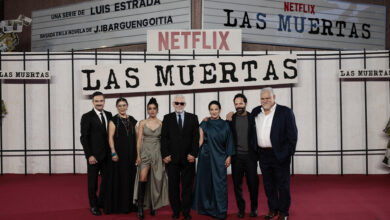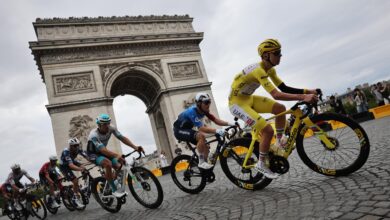Colombian Cycling Humbled by Rising Mexican and Ecuadorian Climbers

Once hailed for their unassailable mountain prowess, Colombian cyclists now face intense pressure from emerging Mexican and Ecuadorian stars. A new generation of riders is reshaping Latin American dominance, challenging an era that seemed permanently owned by Colombia’s climbing tradition.
A Transition Beyond Herrera’s Legacy
Ask any veteran fan to recall the dawn of Colombia’s cycling mystique, and three names surface—Lucho Herrera, Fabio Parra, and Alfonso Flórez. Their late-1980s raids on Europe’s highest passes turned the word escarabajo into shorthand for fearless mountain men. Herrera’s 1987 Vuelta a España win, dissected in the Revista de Estudios Andinos del Deporte, cemented the myth: Colombians did not just climb; they levitated. For three decades, the script rarely changed—when gradients tipped into double digits, a Colombian would appear, head bobbing, legs whirring, and rivals would snap.
Yet, the 2020s are writing a new chapter. This spring’s Giro d’Italia delivered a jolt: Colombia’s top finisher, Egan Bernal, crossed the final line seventh. Two places behind rode Einer Rubio. Ahead, wearing the maglia rosa for ten electrifying days, was Mexico’s 21-year-old Isaac del Toro. Ecuador’s Richard Carapaz—already a Giro champion in 2019—stepped onto the final podium. The old guarantee that Colombian altitude training and Andean genetics would rule every summit suddenly looks fragile, and the peloton knows it.
Mexican and Ecuadorian Momentum Builds
Mexico’s cycling story long felt like a footnote to its football obsession, but a quiet revolution has unfolded on climbs outside Toluca and in wind-tunnel labs near Monterrey. Del Toro, polished by CONADE’s high-altitude program, embodies this modern hybrid: part traditional hill-runner, part data-driven project. His Giro attacks were timed to power-meter perfection, shredding favorites on Blockhaus and Monte Pana. Analysts at Estudios Latinoamericanos de Ciclismo note that Mexican federations have doubled junior-level funding since 2018, funneling talents into European development squads sooner than Colombians once did.
South of the equator, Ecuador’s rise feels even more dramatic. Carapaz grew up farming potatoes at 3,000 meters in Carchi; now, he presides over a pipeline that includes Jhonatan Narváez and Jefferson Cepeda. Corporate backing from mining conglomerates and a partnership with the Universidad de las Fuerzas Armadas allow Ecuadorian riders to alternate between Andean cols and altitude-simulation chambers in Quito. The payoff is visible—in week-long WorldTour stage races, Ecuadorians logged eight top-ten mountain finishes last season, nearly double Colombia’s total (Andean Sports Observatory).

EFE
The Changing Face of Colombian Cycling
None of this means Colombia is fading quietly. Bernal’s survival after his 2022 training crash nightmare still reads like fiction; his seventh place in the Giro proves the fire burns. Rubio shows flashes of vintage pajarraco grit, and Nairo Quintana, though grayer, can sniff wind on a summit finish like few others. Colombia lacks a margin for error: the aura of inevitability is gone.
Why the wobble? Coaches blame global leveling. Once unique to Boyacá, altitude can now be replicated in tents from Girona to Aguascalientes. Sports scientists at the Cátedra de Deporte Latinoamericano argue that Colombia’s federation rested on legacy, under-investing in the analytics arms race. Meanwhile, domestic teams lost sponsorship when coffee prices dipped and the pandemic economy bit. Young Colombians increasingly chase European contracts solo, skipping the cohesive national programs that shaped Herrera’s and Quintana’s primes. The result is that talent is scattered, development pathways fray and the peloton’s fear factor evaporates.
Forward Into a Fragmented Future
The calendar offers an immediate proving ground: June’s Critérium du Dauphiné and July’s Tour de France. Del Toro plans to fine-tune the pacing strategy; Carapaz eyes yellow. Colombian fans hope Dauphiné’s über-steep Col de la Madeleine will resurrect old hierarchies, but bookmakers list Mexicans and Ecuadorians above every Colombian for the Tour’s polka-dot jersey. Should that prophecy hold, Latin America’s internal balance will tilt in ways unimaginable a decade ago.
Historians remind us cycles of dominance ebb and flow. Italians ceded mountain mastery to Spaniards in the 2000s, now Spain watches Slovenia. Colombia can rebound—but only, scholars warn, by rebooting grassroots academies and embracing the performance-science zeitgeist. Petrochemical firm Ecopetrol has teased a national “super-team” for 2026; if realized, it could consolidate emerging prospects and reignite the escarabajo mystique.
For now, the climbers’ caste feels thrillingly unstable. At 21, Isaac del Toro sprints up switchbacks with the reckless joy once reserved for a young Bernal. Carapaz, 31, climbs like a chess player, masking pain behind sunglasses until one sudden burst gaps the field. Colombia’s veterans remain dangerous—but must now fend off rivals bred on similar peaks and superior analytics.
Also Read: How Mexican Climbers Conquered Himalayan Terror Only to Vanish in Stormy Disaster
Fans watching the Giro podium saw a symbolic torch pass: Latin America still owns the mountains, but the monopoly is broken. Whether Colombia reclaims its summit throne or learns to share the view will shape Grand Tours for years. One truth endures amid shifting flags on Alpine ridges: altitude rewards those who adapt, and the Andes—stretching from Boyacá to Carchi to Nevado de Toluca—still forge legs capable of rewriting cycling’s map.





